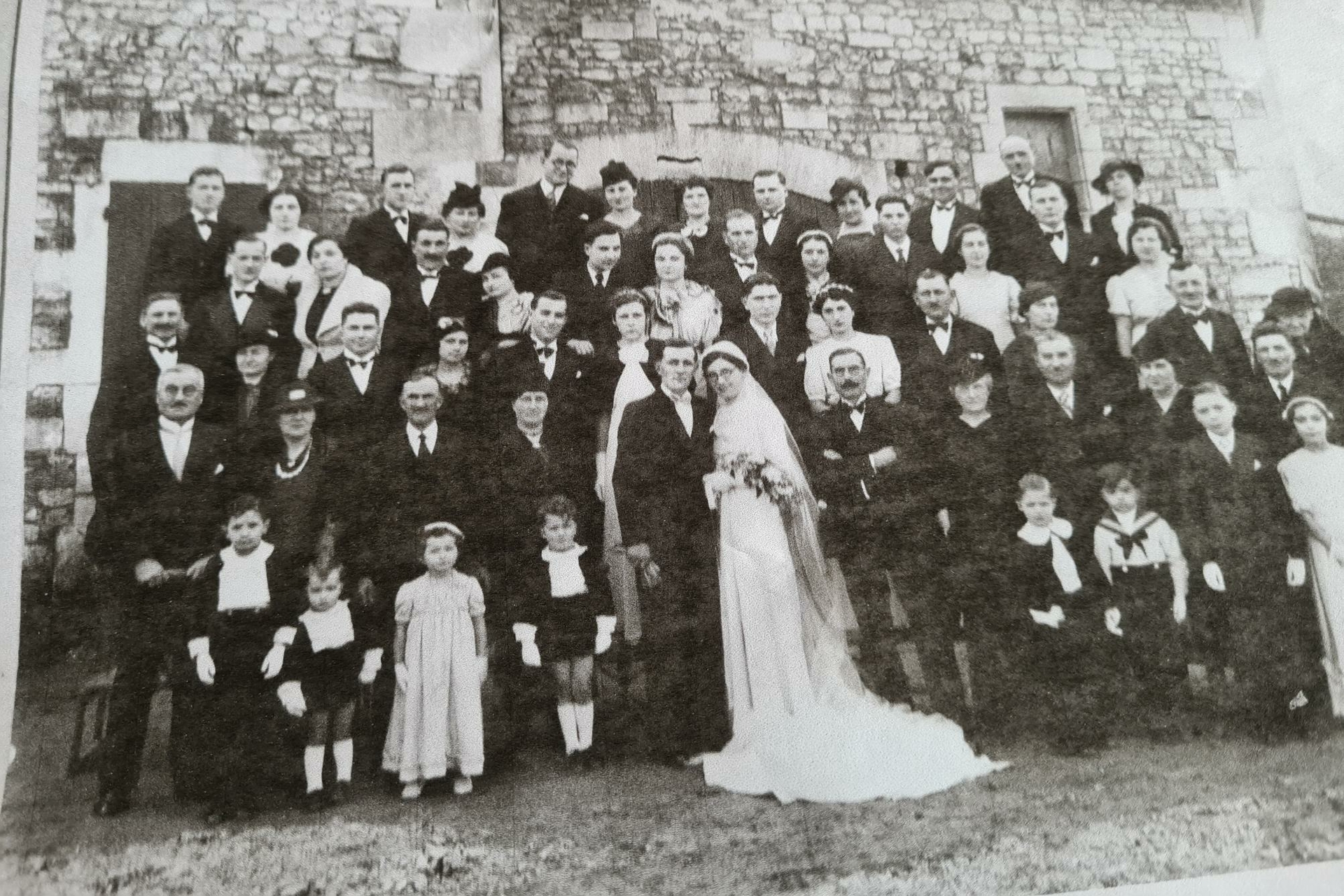Distilled in 1911 - kept in dame jeanne since 1983
What to expect? This pre-war cognac distilled in 1911 was kept in a cask until 1983 and then went to a glass demi john. This should be approached as a real historical treasure. This is a complex, silky smooth cognac! Buttery, very floral, lychee, dandelions, ripe pears. Acacia honey on the taste, old top Chardonnay wine on the nose
about the producer:
Since 1886, in a large typical Charentais house in rustic Saint Sulpice de Cognac, in the heart of the most intimate cru of the Cognac region, called “les Borderies,” cognac has been passed down from generation to generation preserved in the estate’s ancient cellars since 1897. Jean-Jacques Vidal is the charming heir who takes care of this impressive legacy.
He lives at the “Chez Gauthier” estate and is a retired history professor. Jean-Jacques is a committed busy bee and always has the door open for us. Therefore, we are always happy to take the time to visit.
Jean-Jacques is the son of Doctor Jack Vidal and Marie Rivère. Marie Rivère was the daughter of René Rivière. René was the son-in-law of Célestin Angevain who planted the first vines in the late 19th century.
The estate was managed and run by Célestin Angevain until his daughter Nina married René Rivière in 1910. René Rivière then ensured the continuity of the company. When his son-in-law went off to war in 1915, he was obliged to take over the management of the estate and distill until René Rivière’s return in 1919.
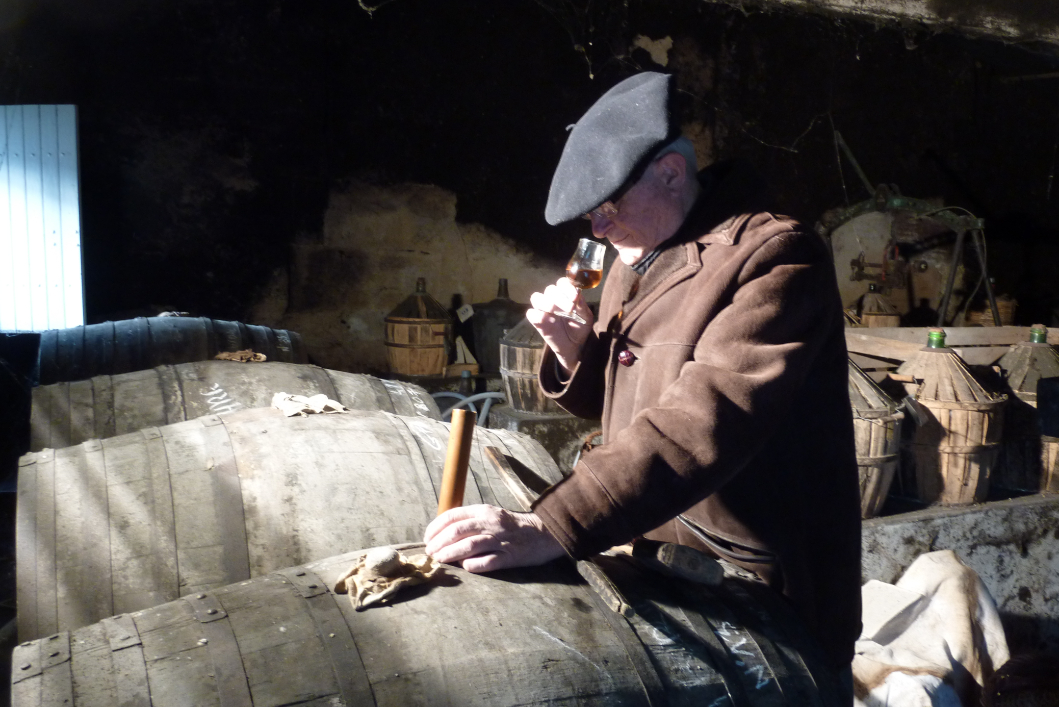
After a winemaking tradition of more than three generations, Jack Vidal died in 1981 and the vineyard was no longer farmed. Today, the estate houses only the well-preserved dame jeannes in a small reserve of Cognacs that bear witness to another era.
Anno 2023
All the preserved cognacs are all single-cru cognacs, now extremely rare, from the same estate that the Angevain-Rivière-Vidal families have kept since 1886. Marie Rivière’s heirs certify the authenticity and provenance of these family cognacs.
The distilling site still exists: The three remaining boilers date from the 1960s. The boilers used to make Cognac before 1914 have been dismantled, but part of the “gooseneck” of one of the boilers is still preserved in the family museum.
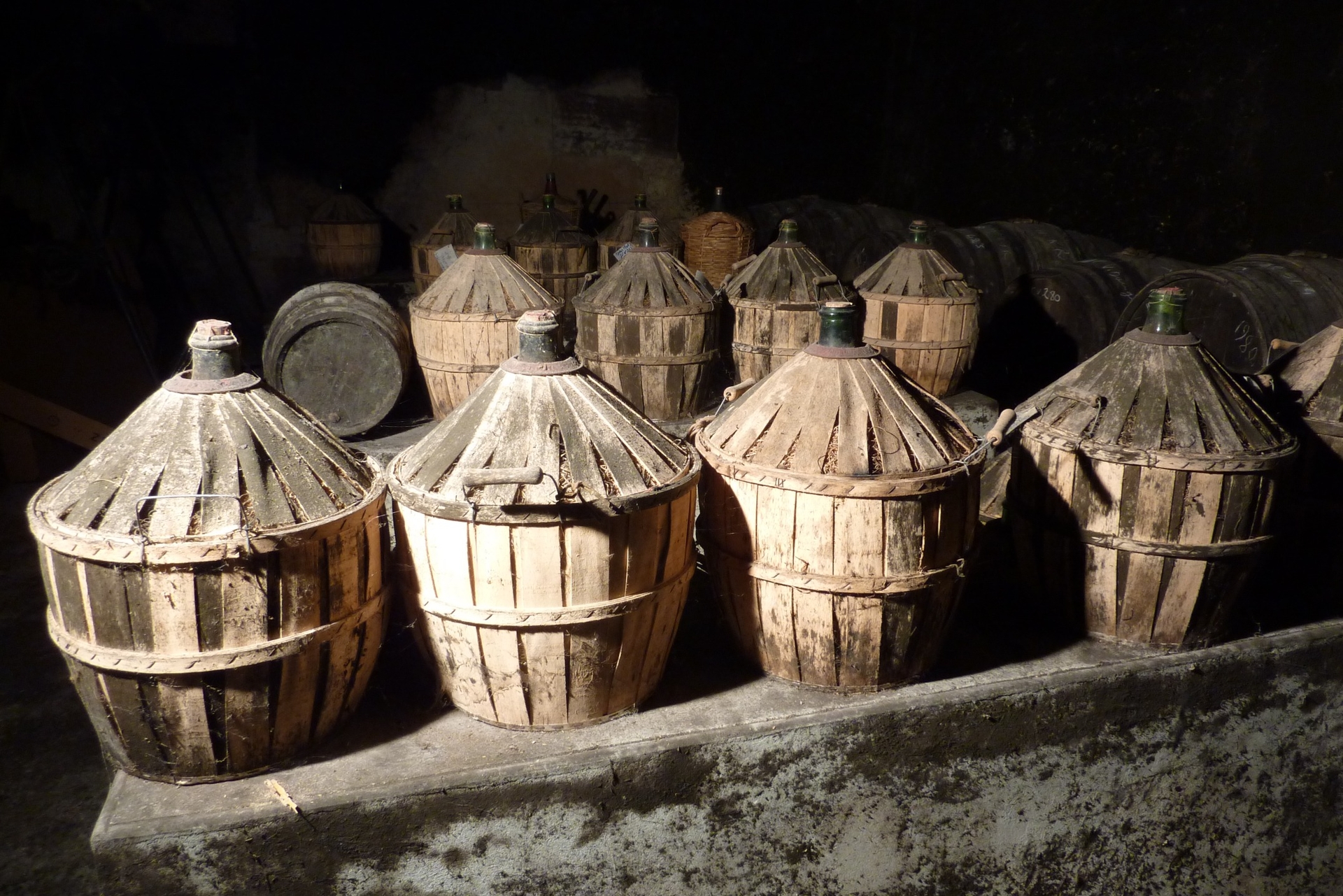
Old craftmanship
These cognacs are probably made exclusively from folle blanche. Despite the ravages of phylloxera (phyloxera around 1875), we know that the geographic location of their vines allowed them to better resist.
The family had 16 hectares of vineyards that consisted of plots scattered around the site “Chez Landais.” This diversification of the Borderies’ privileged terroir had the advantage of protecting crops (some plots were in low-lying areas less exposed to frost, for example) and they produced harvests with different characteristics.
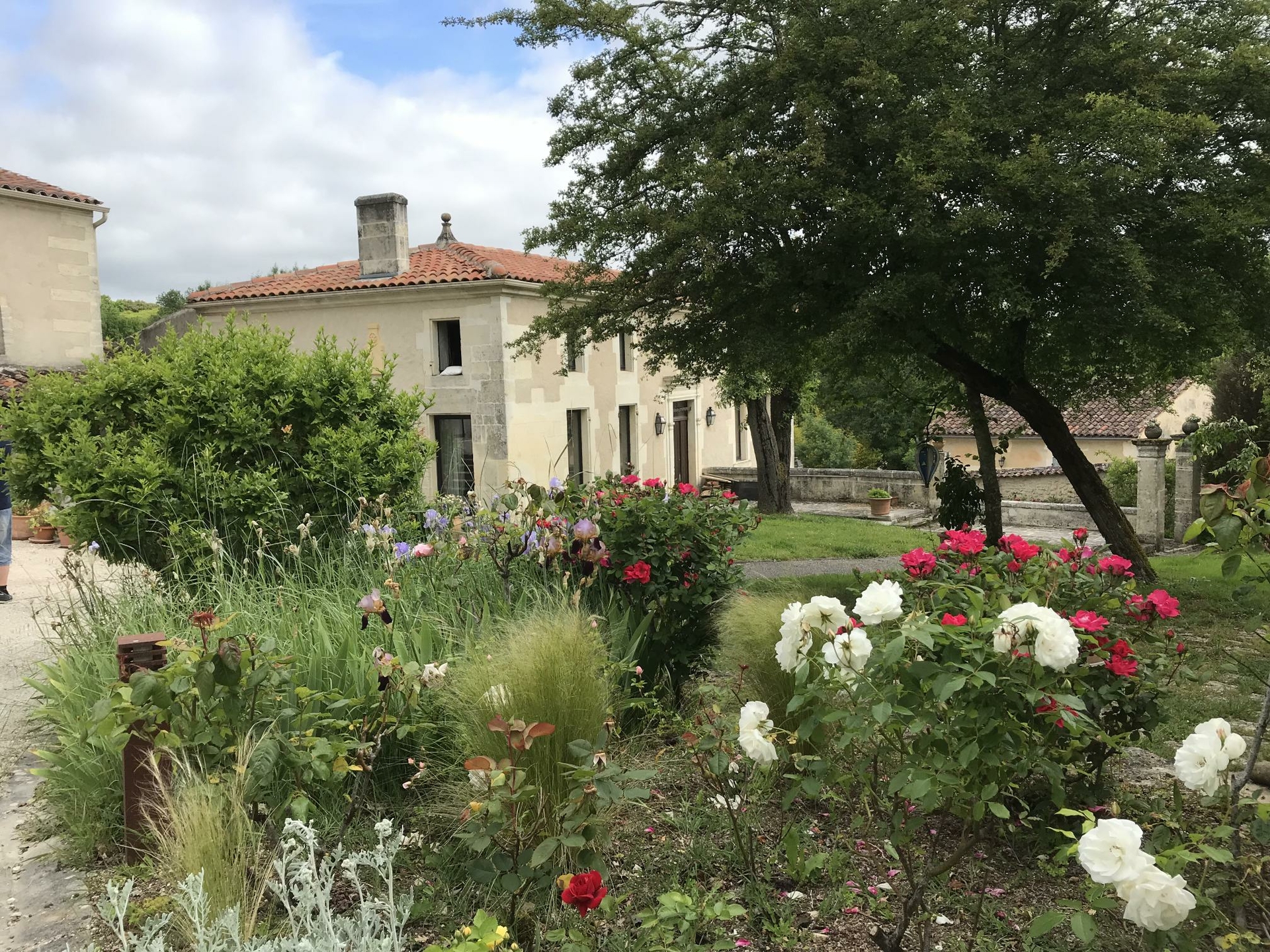
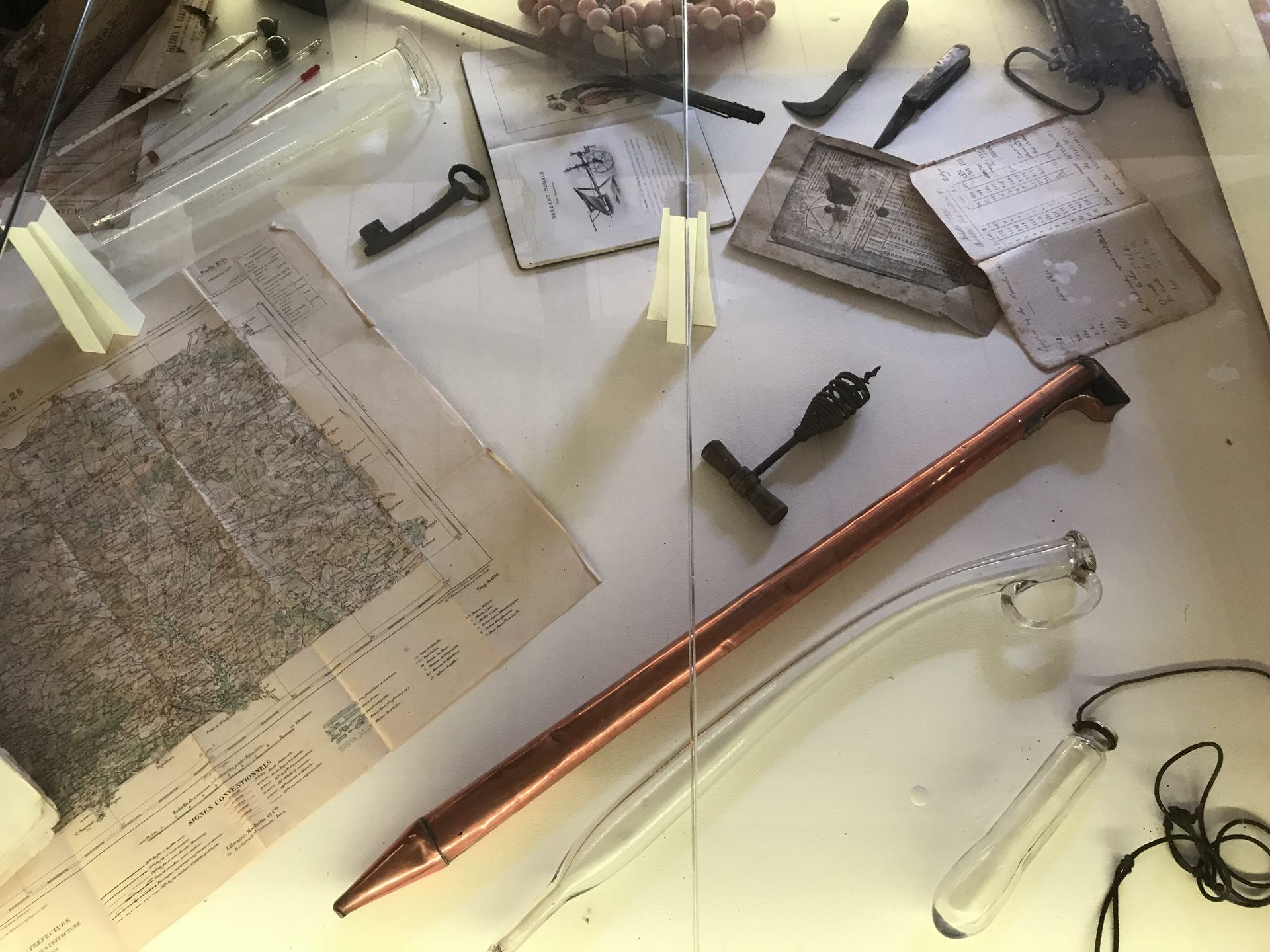
Distillation of the wines “sûr lie”. The lie is the sediment of dead yeast cells in a wine. With sur lie wines, the wine is allowed to continue aging along with that sediment for a period of time. If this was done properly it gives a much more aromatic distillate, which you clearly recognize in these cognacs.
René Rivière’s distillation book, written by his father-in-law Celestin Angevain, lists the quantities of wine distilled and indicates that in those years the eau de vie came out of the stills at 69% and was put into barrels undiluted at this %.Until 1983, all these barrels, inherited from Madame Vidal née Rivière, were stored in a damp cellar in the heart of the Rivière house.
In 1983, all barrels were transferred to a dry cellar, but still close to the mansion. Madame Vidal née Rivière, administrator of the estate after her husband’s death in 1981, asked that the oldest barrels be put on dame jeannes and this transfer took place between 1983 and 2003.
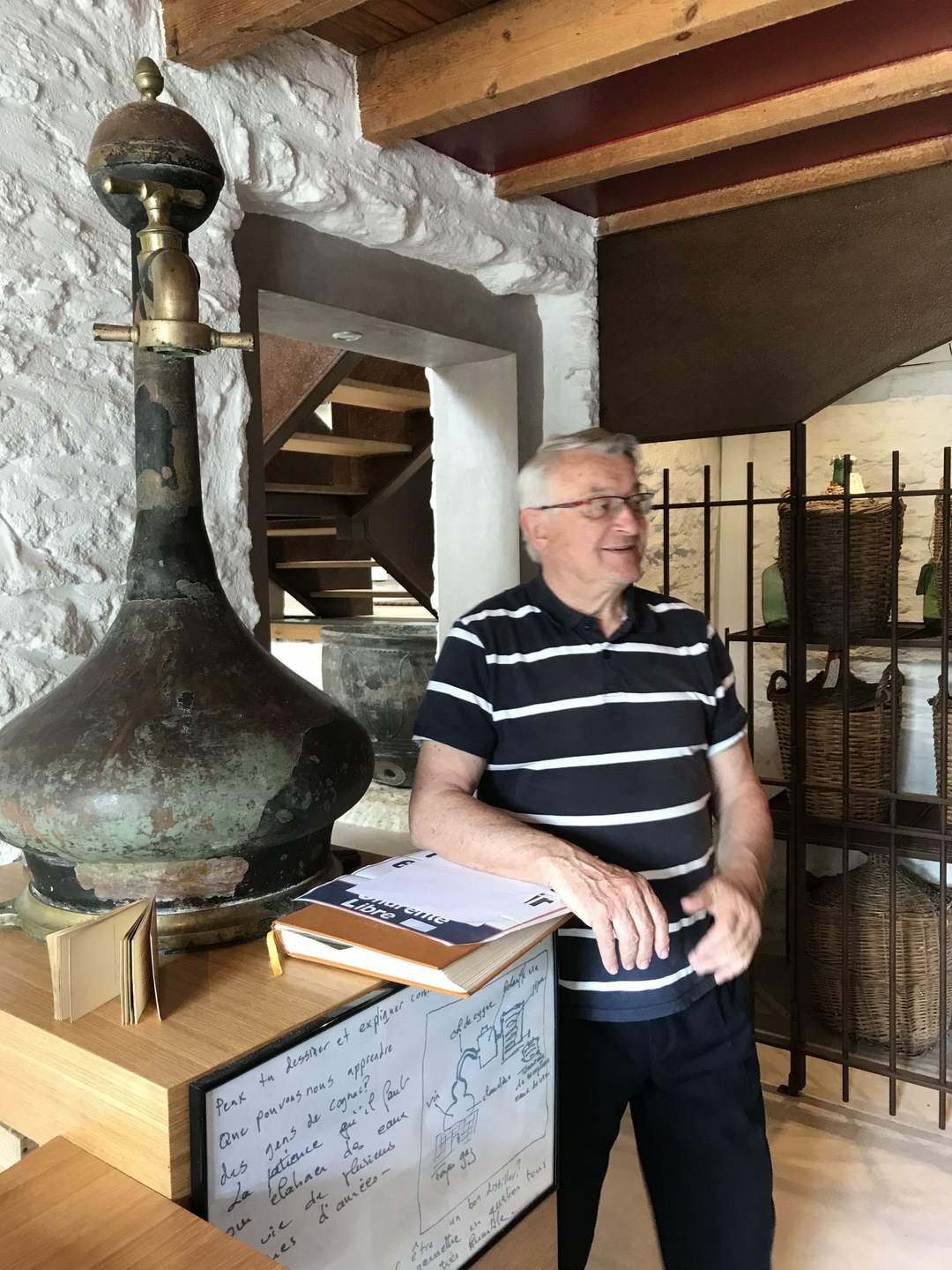
Coincidence does its work.
In each farm, it was usually necessary to sell the entire crop by age group to ensure the continuity of the farm. Coincidentally, a few barrels were set aside in years when the harvest was more abundant. This was the case for several batches whose inscriptions on the barrels referred to the early 20th century.
According to the experts, these cognacs were all the result of rigorous and demanding work, which explains why their quality has been perfectly preserved over time. Well harvested, well distilled and kept in moist cellars, these “eaux-de-vie” only needed to age to get better….
Traceability linked to a family history
May 14, 1920
A declaration of transfer by death stating that “Marie Madeleine Rivière, the only child from the marriage, is the sole heir of said Lady Rivière, her mother.”
The inventory of the estate of Madame Rivière, born Angevain, with the description “in kind: twenty-six hectoliters of leftover eau de vie out of the forty-nine hectoliters allotted to her at the division of her mother’s estate” “In another cellar Seventy-two hectoliters of eau de vie 1919 at sixty-eight degrees community…. forty hectoliters of eau de vie nineteen hundred and eleven, nineteen hundred and twelve, nineteen hundred and thirteen at sixty degrees….”
All these documents were authenticated and certified by Master Isabelle Braastad, notary public in Cognac, on February 4, 2013.
September 1981
Since this cognac had aged naturally in barrels with no additives or alterations, the time had come to bottle it and perform an appraisal before sealing it. When her husband died in 1981, Madame Marie Madeleine Vidal born Rivière had the 8 barrels corresponding to the years of distillation from 1910 to 1930 placed on dame Jeanne.
April 1996
The qualitative valuation of the Borderies plots, conducted by Mr. Paul. Raguenaud, certified real estate broker, on April 20, 1996, concluded that
“…All valued eaux de vie are very old and rare Borderies, well typified in their subappellation.”
However, Mr. Raguenaud, who was not qualified to consider these Cognacs vintage, declared that “these eaux de vie could claim vintage.” He then sealed the lady Jeannes.
Aug. 25, 2014
In response to a request to the Division of Competition, Consumer Affairs and Fraud Prevention for a presentation of our Cognacs, the regional division indicated its agreement to a presentation of these Cognacs that would allow them to be cited in a period ranging from 1910 to 1930.
The regional department’s response to this request was as follows: “the expression – a Cognac born at the beginning of the nineteenth century – …. given the evidence at your disposal, this presentation requires no further comment”
